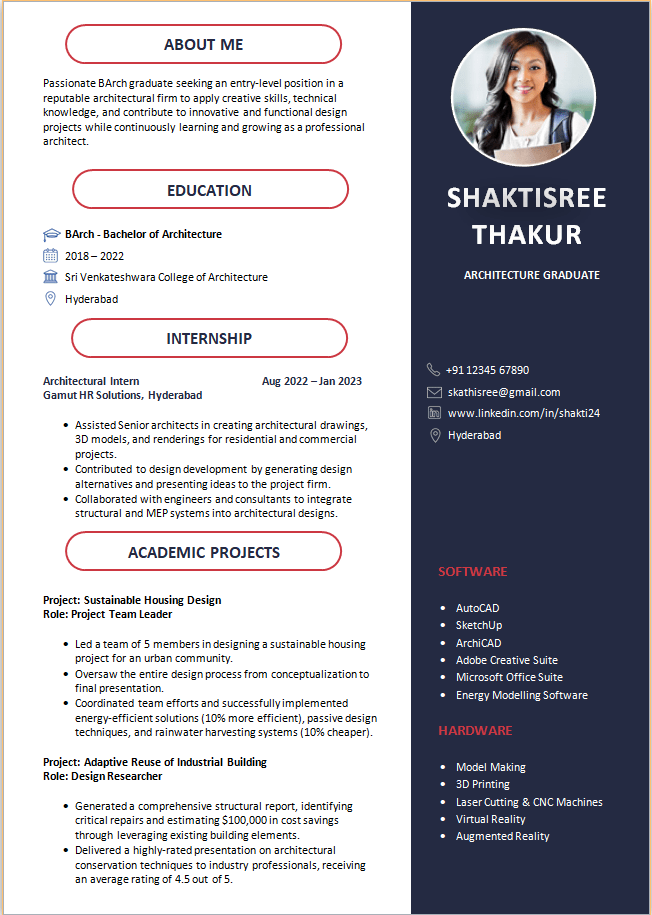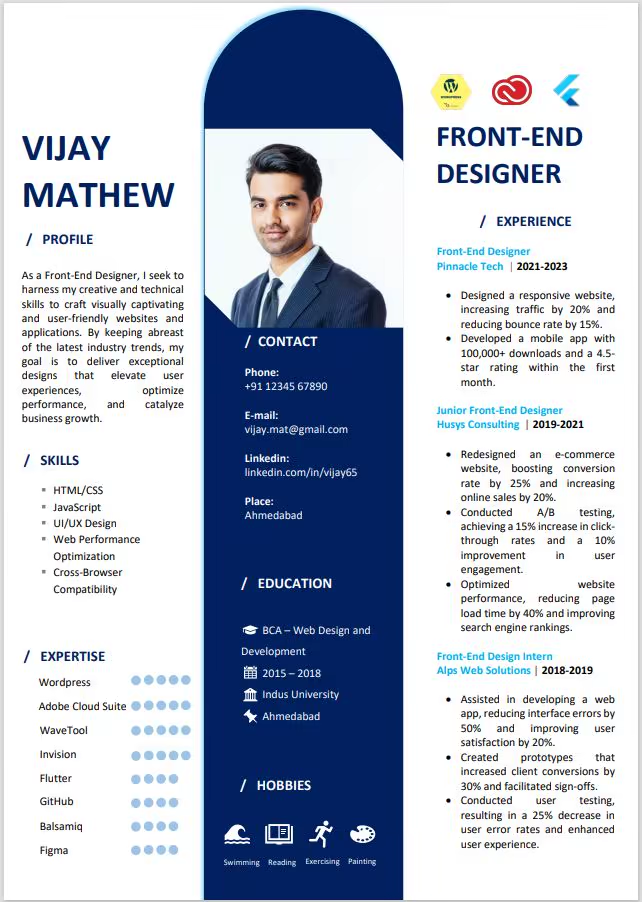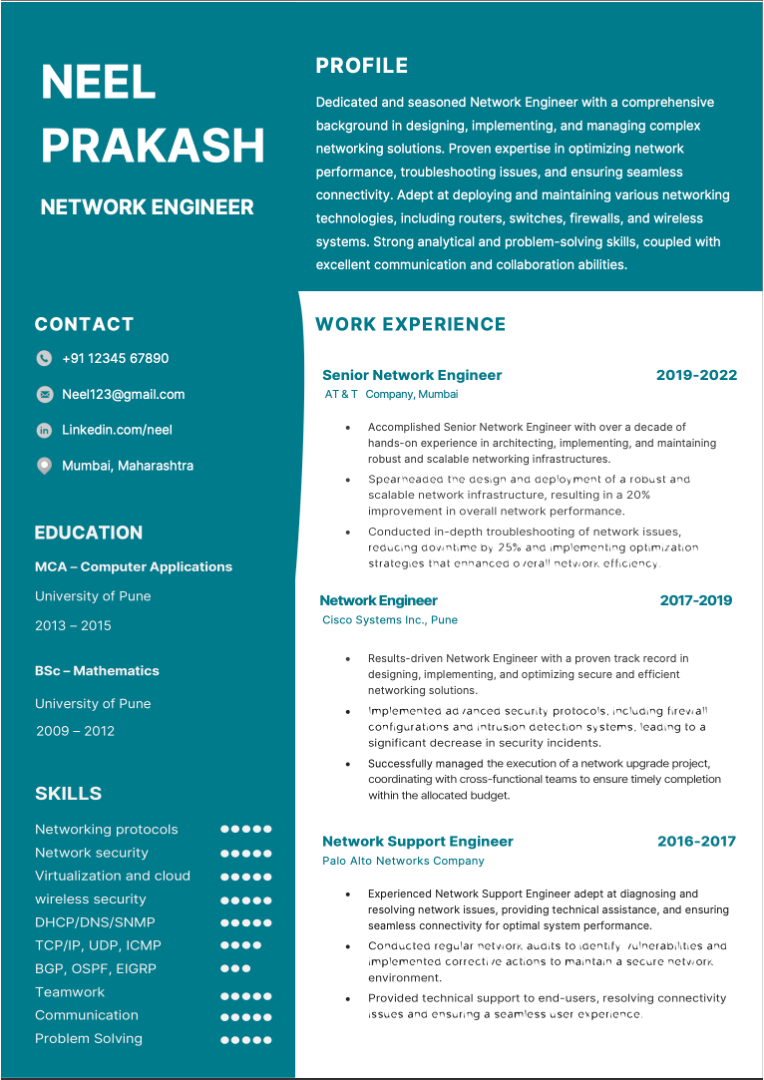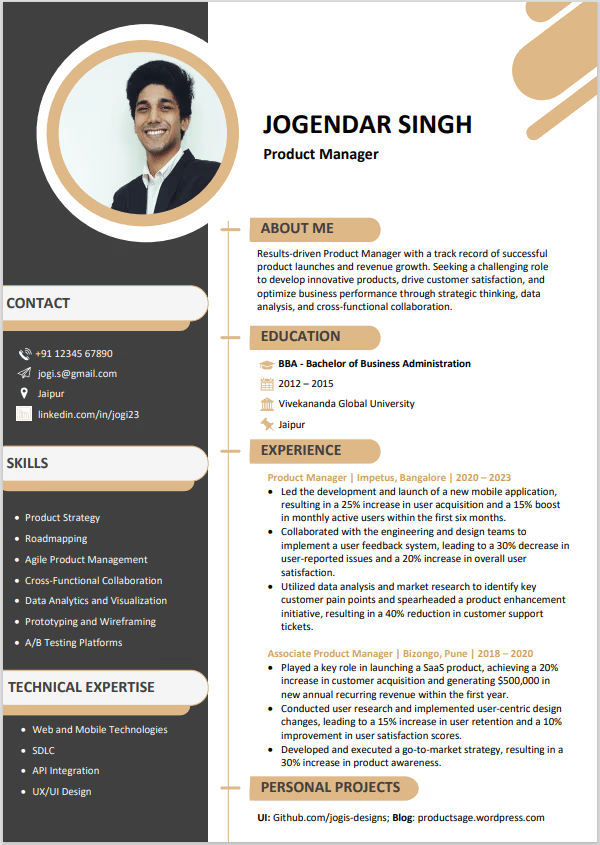Modern Resume
BArch Fresher Sample Resume
BArch Intern
BArchF


Objective
Here are some options for you to consider. Sample 1: Passionate BArch graduate seeking an entry-level position in a reputable architectural firm to apply creative skills, technical knowledge, and contribute to innovative and functional design projects while continuously learning and growing as a professional architect. Sample 2: Recent Bachelor of Architecture graduate seeking an internship to apply strong theoretical foundation and hands-on skills, contributing to sustainable and innovative design projects while honing proficiency in architectural software and technical execution. Sample 3: Ambitious Bachelor of Architecture graduate eager to launch a career through an internship, leveraging advanced design and architectural software skills to contribute effectively to dynamic projects, while learning from and collaborating with industry professionals.
Education
Bachelor of Architecture, BArch
Skills
In addition to the ones we have listed on the sample resume, you may consider these as well since these are all the skills in demand in the job market.
AutoCAD:
Proficiency in AutoCAD, a widely used software for creating detailed 2D and 3D architectural drawings, is essential for most architectural positions. High demand.
Revit:
Competence in Revit, a Building Information Modeling (BIM) software, is increasingly vital for collaborative design and documentation. High demand.
SketchUp:
Skill in SketchUp, a 3D modeling software, is valued for creating quick conceptual designs and presentations. Moderate demand.
Adobe Creative Suite:
Proficiency in Adobe software (Photoshop, Illustrator, InDesign) aids in creating compelling visual presentations and graphics. Moderate to high demand.
Rhino:
Proficiency in Rhino, a 3D modeling software, is sought after for complex geometric designs and parametric modeling. Moderate demand.
Lumion or V-Ray:
Expertise in rendering software like Lumion or V-Ray enhances the ability to create realistic visualizations. Moderate demand.
Architectural Drafting:
Strong drafting skills, both by hand and digitally, are fundamental for communicating design ideas accurately. High demand.
Construction Documentation:
Knowledge of preparing detailed construction documents, including plans, sections, and elevations, is essential. High demand.
Building Codes and Regulations:
Understanding local building codes and regulations is crucial for designing safe and compliant structures. High demand.
Sustainable Design:
Familiarity with sustainable design principles and tools, such as LEED certification, is increasingly valued in response to environmental concerns. Moderate to high demand.
Projects
If you are still in college, you should consider working on projects that would help highlight your technical capabilities when you graduate and enter the job market. Here are two projects for you to consider pursuing either as part of your academics or as a freelance project so you can include them in your resume.
Project 1: Sustainable Design of a Community Center
Description:
Designed a sustainable community center focusing on energy efficiency and environmental friendliness. The project aimed to create a functional and aesthetically pleasing space while minimizing the building's carbon footprint.
Technical Highlights:
1. Utilized passive design strategies to reduce energy consumption by 30%.
2. Implemented rainwater harvesting system, resulting in a 50% reduction in water usage.
3. Conducted solar orientation analysis to optimize natural lighting and reduce artificial lighting needs by 40%.
Quantified Results:
1. Achieved LEED Silver certification for sustainable design.
2. Reduced annual energy costs by $10,000 compared to conventional designs.
3. Collected and reused 70% of rainwater for irrigation and non-potable use.
By including these projects on your resume, you can effectively demonstrate your technical skills, design sensibilities, and problem-solving abilities to potential employers. The quantified results provide tangible evidence of your contributions and showcase the real-world impact of your designs. Good luck!
Interests/Hobbies
For fresh Bachelor of Architecture graduates, showcasing a strong passion for technical pursuits within the realm of design and architecture can significantly increase job opportunities and improve the potential for getting hired. In today's competitive job market, employers seek candidates who not only possess the necessary academic qualifications but also exhibit a genuine enthusiasm for the field they are entering.
By including hobbies and interests on your resume that align with design and architecture, you provide a deeper insight into your commitment to the profession beyond formal education. These pursuits showcase your dedication to continuous learning, creative exploration, and the drive to stay updated with industry trends.
Demonstrating your passion through these interests can make your resume stand out, offering employers a glimpse into the unique perspective you bring to design challenges.
Employers recognize that candidates who are genuinely passionate about architecture are more likely to contribute innovative ideas, collaborate effectively, and remain motivated during challenging projects.
Your interests can also serve as conversation starters during interviews, allowing you to share personal experiences that further emphasize your dedication to the field. Here is a list of ten hobbies and interests for you to consider including on your resume, if you are a recent BArch graduate.
Sketching and Drawing:
Demonstrates a commitment to artistic expression and the ability to visually communicate design concepts.
Model Making:
Showcases hands-on skills and attention to detail in crafting physical architectural models.
Photography:
Indicates an eye for capturing architectural details, composition, and spatial qualities.
Urban Exploration:
Reflects a curiosity about built environments and an interest in understanding the relationship between design and the cityscape.
Architectural History:
Highlights a dedication to understanding the evolution of architectural styles and influences.
Interior Design:
Illustrates a broader interest in creating functional and aesthetic spaces beyond the external structure.
Sustainable Living:
Demonstrates a commitment to environmentally conscious living, aligning with modern architectural trends.
Art and Design Exhibitions:
Indicates an engagement with the broader design community and an interest in staying informed about contemporary design practices.
Cultural Studies:
Illustrates a desire to explore how architecture is influenced by cultural contexts and traditions.
3D Printing and Digital Fabrication:
Demonstrates an interest in emerging technologies relevant to architectural design and production.
Experience
Project 2: Adaptive Reuse of Industrial Space into Art Gallery
Description:
Transformed an abandoned industrial warehouse into a contemporary art gallery while preserving the original industrial character. The project aimed to seamlessly blend architectural history with modern aesthetics.
Technical Highlights:
1. Conducted structural analysis to assess load-bearing capacity for gallery installations.
2. Designed custom lighting solutions to accentuate artwork and maintain energy efficiency.
3. Incorporated natural ventilation strategies to ensure optimal airflow and comfort for visitors.
Quantified Results:
1. Increased the available gallery space by 25% through efficient layout planning.
2. Reduced energy consumption by 20% through innovative lighting and ventilation solutions.
3. Enhanced foot traffic and visitor engagement, leading to a 40% increase in attendance compared to the previous year.
Additional Inputs
If you are a Bachelor of Architecture student or a recent graduate, engaging in reading technical magazines and journals is a powerful way for to demonstrate your technical capacities and enthusiasm for the field of Architecture and Design.
By mentioning regular readership of reputable publications like Architectural Record, ArchDaily, Dwell, Journal of Architectural Education (JAE), and Metropolis on their resumes, you can not only highlight your commitment to staying informed about current trends and innovative practices but also showcase your dedication to continuous learning and ability to integrate cutting-edge concepts into your architectural pursuits.
This practice not only sets you apart as a proactive learner but also provides you with relevant talking points during interviews, making conversations with potential employers more engaging and insightful.
Stay Informed:
Technical magazines and journals provide insights into the latest advancements, emerging technologies, and innovative design approaches in the field of architecture. This helps students and recent graduates stay informed about industry changes and new opportunities.
Depth of Knowledge:
These publications often delve into in-depth analyses, case studies, and research findings that can expand a student's or graduate's understanding of complex architectural concepts and methodologies.
Professional Growth:
Regular reading fosters continuous learning, enhancing technical knowledge and expertise. This proactive approach to education showcases a dedication to personal and professional growth.
Networking:
Many magazines and journals feature articles written by industry experts and thought leaders. Engaging with these materials can provide exposure to influential figures and help individuals build their professional networks.
Conversational Currency:
Staying up-to-date with industry trends gives students and graduates relevant topics to discuss during interviews, meetings, and networking events. This demonstrates their genuine interest in the field and ability to engage in meaningful conversations.
Here are five recommended resources for Bachelor of Architecture students to read or subscribe to:
Architectural Record:
A renowned publication covering a wide range of architectural topics, from design and construction to technology and sustainability.
ArchDaily:
An online platform offering a wealth of articles, news, and projects that span various architectural styles and trends.
Dwell:
Focuses on modern design and architecture, showcasing innovative residential projects and interior design concepts.
Journal of Architectural Education (JAE):
A scholarly publication that presents research, case studies, and critical essays on architectural education and practice.
Metropolis:
A magazine that explores architecture's intersection with culture, design, and social issues, offering thought-provoking insights into the broader impact of architecture.
Subscribing to or regularly reading these resources can showcase your commitment to staying informed about the latest industry developments and trends, reinforcing your technical capabilities and passion for the field.
Why this template works
This template is aimed at helping recent college graduates find their first job opportunity. If you are considering using this template, make necessary changes to the sections. This template is especially helpful if you have strong technical skills to highlight on your resume, even if they are just two or three.
Remove the internship section if you haven't had an internship experience, and replace that section with industrial visits or relevant courses you would have taken at the college.
Good luck with your job search.


